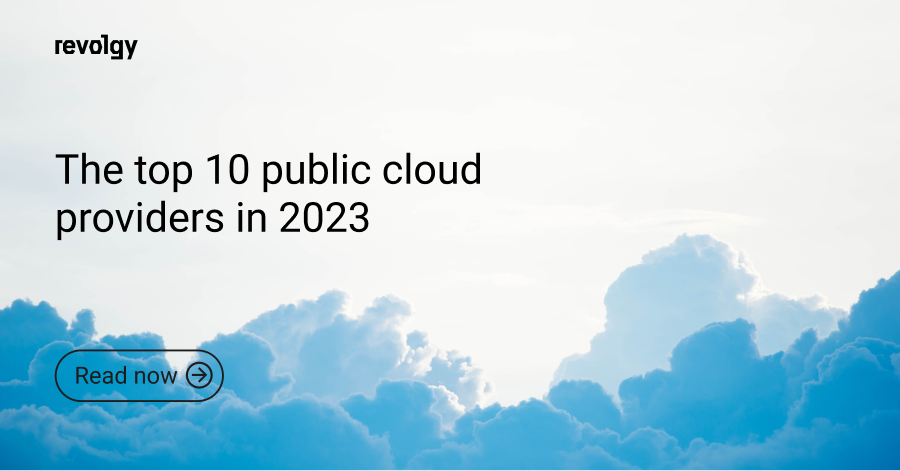AWS, GCP
The benefits and challenges of coexisting GCP and AWS cloud infrastructures
Virtually no single cloud provider can meet all of the needs of every business. This is where cloud coexistence comes in. It’s a practice that businesses are increasingly considering as it can be a good way to get the best of both worlds by taking advantage of the strengths of different providers.
In this article, we’ll look at what cloud coexistence means, its benefits and challenges, and discuss the coexistence of GCP and AWS cloud infrastructures within a single organization.
What is cloud coexistence?
Cloud coexistence is the use of multiple cloud providers to deliver a single application or service.
There are a few different ways to implement cloud coexistence. One way is to use a hybrid cloud approach, where some workloads are hosted on-premises and others are hosted in the cloud. This can include using a combination of public cloud providers, such as AWS and GCP, and private cloud providers, such as VMware vSphere.
Another way is to use a multi-cloud approach, where workloads are hosted on multiple cloud providers. For example, a business could use AWS for compute and storage, and Azure for machine learning.
Lastly, you can opt for a so-called transparent environment, where from the application layer you don’t know (or care) where your application runs or how it is being managed.
Coexistence of GCP and AWS within a single organization
Google Cloud Platform (GCP) and Amazon Web Services (AWS) are two of the leading cloud providers in the world. They offer a wide range of services, including compute, storage, networking, database, analytics, and machine learning.
There are a number of reasons why businesses might choose to have coexisting GCP and AWS clouds within their organization.
Benefits of cloud coexistence
Improving performance
Businesses can improve the performance of their applications by distributing workloads across multiple providers. This is because each provider has different strengths and weaknesses in terms of performance. For example, AWS is known for its compute and storage capabilities, while GCP is known for its machine learning capabilities. By using both providers, businesses can get the best of both worlds and improve the performance of their applications.
Security and reducing risk
By using multiple providers, businesses can spread their risk and reduce the likelihood of a security breach. This is because each provider has different security measures in place. For example, AWS strongly focuses on security, while GCP offers a wide range of security features. The different security measures of multiple cloud providers can complement each other, providing businesses with a more robust security solution.
Meeting regulatory requirements
Some businesses are required to meet certain regulatory requirements, such as those related to data sovereignty. By using multiple providers, businesses can ensure that they are meeting these requirements. For example, if a business is required to store its data in a specific region, it can use a provider that has a data center in that region.
Flexibility and agility
Cloud coexistence can give businesses more flexibility and agility. Businesses can easily move workloads between providers as needed. For example, if one provider experiences an outage, businesses can quickly move their workloads to the other provider.
Cost savings
Your business can take advantage of competitive pricing and discounts from different providers. For example, you may find that one provider is cheaper for compute resources, while another one is cheaper for storage resources. Using both providers can get you the best deals on the resources you need.
Challenges of cloud coexistence
There are also some challenges associated with the coexistence of GCP and AWS. By carefully considering these challenges, you can reduce security risks and make the most of using multiple cloud providers.
Complexity
Managing multiple providers can be complex. Businesses need to have a clear understanding of the different services offered by each provider, and they need to have a way to manage their workloads across multiple providers. This can be a challenge, especially for businesses that are not familiar with cloud computing.
Cost
Using multiple providers can sometimes be more expensive than using a single provider. For example, running the same workload on two providers instead of one to achieve high availability will result in higher spending.
Security management
It can be more difficult to manage and secure applications deployed across multiple providers. Businesses need to have a comprehensive security strategy and tools in place to protect their applications and data.
Compliance
Businesses need to comply with a variety of regulations, such as those related to data privacy and security. This can be a challenge when using multiple providers, as businesses need to ensure that they are compliant with the regulations of all of the providers that they use.
As a cloud provider, we believe that cloud coexistence is a viable option for businesses of all sizes. Do you want to know if cloud coexistence is the right solution for your business? Revolgy offers a wide range of services that can be used to leverage the cloud. Contact us today for a free consultation.
FAQs
Q1: What is cloud coexistence?
Cloud coexistence is the practice of using multiple cloud providers to deliver a single application or service.
Q2: What are the different ways to implement cloud coexistence?
There are three main ways to implement cloud coexistence:
- Hybrid cloud: Hosting some workloads on-premises and others in the public cloud.
- Multi-cloud: Hosting workloads on multiple different public cloud providers.
- Transparent environment: An approach where the application layer does not know or care where the application runs or how it is managed.
Q3: What are the benefits of having coexisting GCP and AWS clouds?
The primary benefits include:
- Improving the performance of applications.
- Enhancing security and reducing risk.
- Meeting specific regulatory requirements.
- Gaining more flexibility and agility.
- Achieving potential cost savings.
Q4: How can cloud coexistence improve application performance?
Businesses can improve performance by distributing workloads to leverage the different strengths of each provider. For example, AWS is known for its compute and storage capabilities, while GCP is known for its machine learning capabilities.
Q5: How does using multiple cloud providers help reduce security risks?
By using multiple providers, businesses can spread their risk because each provider has different security measures in place. These different security approaches can complement each other, providing a more robust overall security solution.
Q6: In what way does cloud coexistence provide more flexibility and agility?
It gives businesses the flexibility to easily move workloads between providers as needed. For example, if one provider experiences an outage, a business can quickly move its workloads to the other provider to maintain service availability.
Q7: What are the main challenges associated with cloud coexistence?
The main challenges are:
- Complexity: Managing multiple providers can be complex and requires a clear understanding of each provider’s services.
- Cost: Using multiple providers can sometimes be more expensive, for instance, when running the same workload on two providers to achieve high availability.
- Security Management: It can be more difficult to manage and secure applications that are deployed across multiple providers.
- Compliance: Businesses must ensure they comply with the regulations of all the providers they use.



